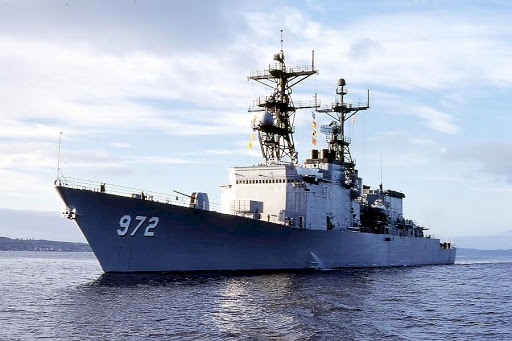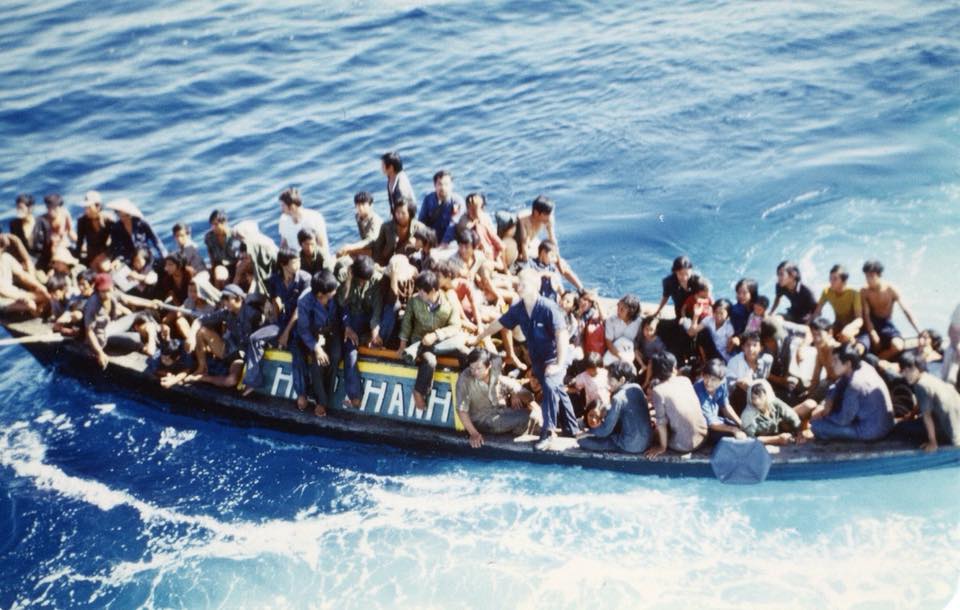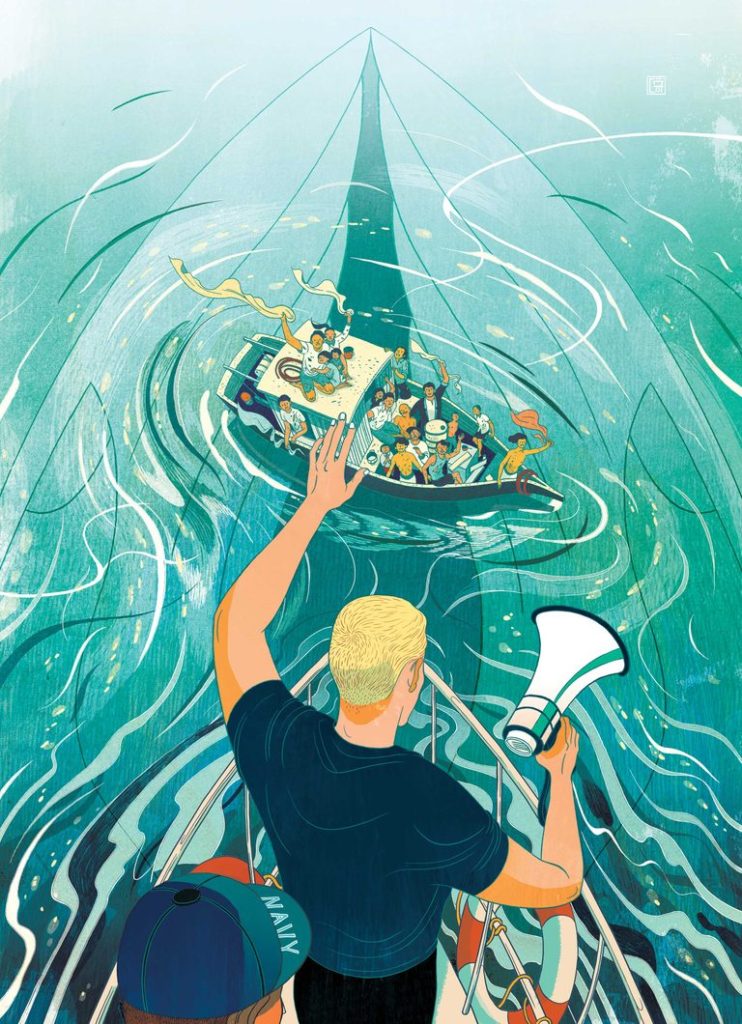
My Navy Crew Rescued a Group of Lost Refugees, And It Changed My Life
By Tom Parzyk
On July 10, 1980, I was aboard the destroyer USS Oldendorf DD-972, in transit in the South China Sea from Singapore to Subic Bay, in the Philippines. The day was gray and dreary, with threatening clouds all around us. The wind was blowing at 20 knots with about ten-foot swells. There was a typhoon 200 miles east of us heading our way. All of us were looking forward to arriving in the Philippines as quickly as possible. Suddenly, the lookout spotted an object adrift about ten miles to the east.
The signalman looked at it through the large telescopic binoculars we called the big eyes and announced that it was a boat with many people on it. We all knew right then that they were refugees adrift in an area dangerous with reefs and shoals.
It was almost noon. I was going off the eight-to-12 watch when the captain announced to the crew from the bridge that we were heading toward the boat to assist her. The ship came alive. Everyone prepared for a possible rescue. I left the bridge, grabbed a sandwich on the mess deck, and made my way to the fantail, where I would help out. Along the way, I noticed that most of the crew members were complaining about assisting the boat people. I’ll never forget how a big, burly engineman looked into my eyes and angrily said, “We oughta leave them out there to die.”
We got as close to the boat as we safely could to avoid the reefs. We then sent out the whaleboat with a small crew to check it out further. The situation was much worse than we’d expected. The whaleboat crew reported back that an old 25-foot wooden junk boat was jam-packed with about 50 men, women, and children. They were very weak and trying to keep the slowly sinking junk afloat. Our ship became even more prepared after that news. Some gathered whatever dry clothes anyone could spare, and I prepared by getting the special decontamination area ready; it would normally be used to wash off nuclear fallout. I unlocked the compartment and readied it with soap and all the necessary medical items. I then watched as the whaleboat towed the junk closer and closer to the ship. It wasn’t an easy task, as the seas were high.
We finally got alongside the junk, and the first thing I noticed was the strange sound of babies crying. It was the first time I had heard babies crying out at sea. Then came the sound of the men and women excitedly talking with pain in their voices.
The women sat holding their children and caring for the sick, while the men remained standing and stoic. But the faces of all the boat people reflected great fatigue. Their bodies, sunbaked and bony, did too. We helped get them settled. The weakest of them received excellent treatment in the sick bay, and the rest of them stayed in the engineers’ berthing compartment. The engineers were glad to sleep in their working spaces for the remaining two nights of our voyage.
During those hours after the rescue, I noticed a big change in the attitude of the crew. Everyone was happy about the successful rescue effort. We discovered that boat people were, of course, just as human as any of us.
The next day, after our guests were properly rested, we ate, sang, and laughed with them and made them as comfortable as we knew how.
We soon discovered their story. They were Vietnamese who had left their homeland a month earlier with Singapore as their destination. After one week, their motor had broken down. They had gone without food and water for the past ten days. There had been 55 of them, but seven had died.
Outside, the weather was growing worse, but inside, everything felt warm and pleasant. Our Vietnamese friends were very happy. Compared with being on that small boat for the past month, they must have felt as though they were on the Queen Mary instead of an old Navy destroyer.
On the last evening before we pulled into port, I walked into the engineering berthing space and was greeted by another sight that I’ll never forget. The same big, burly, bearded engineman who had once wanted to avoid the rescue was now seated at the table looking right at me and smiling widely. In his large arms, he held a bright-eyed baby girl, carefully wrapped in one of his old faded blue work shirts. She looked very secure as he gently fed her a life-giving bottle of milk.



